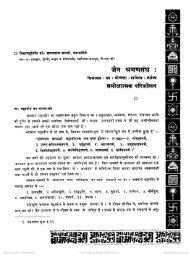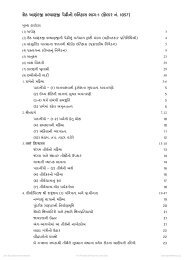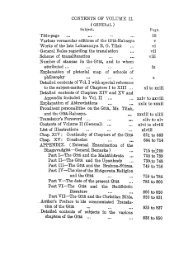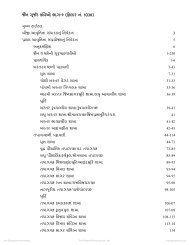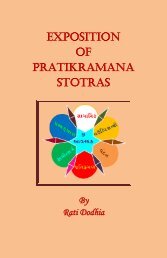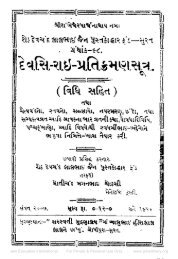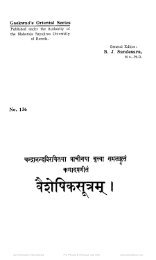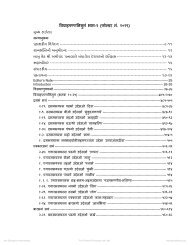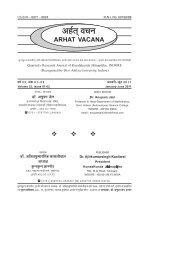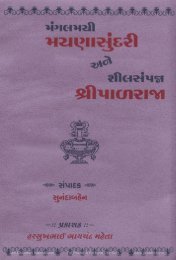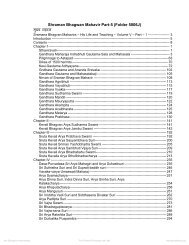Chapter - 08 Bon Po Religion - Jain Library
Chapter - 08 Bon Po Religion - Jain Library
Chapter - 08 Bon Po Religion - Jain Library
Create successful ePaper yourself
Turn your PDF publications into a flip-book with our unique Google optimized e-Paper software.
Shri Ashtapad Maha Tirth - II<br />
2. The stage in which the other traditions - secret knowledge and the alchemists influenced<br />
<strong>Bon</strong>. It also includes the influence of Shaiva and Bauddha Tantra.<br />
3. Dramatic transformation of <strong>Bon</strong> in the form of Buddhism.<br />
Hermanns (1965) sees Iranian influence on Buddha religion. According to P. Kavaerne (1987-<br />
163-174), it is a non-substantiated opinion as it is a claim without any decisive proof.<br />
Snellgrove (1967) wrote “The nine ways of <strong>Bon</strong>”-(London oriental series vol-18). He studied<br />
the authentic religious literature of <strong>Bon</strong> <strong>Po</strong>. According to Snellgrove (1967) ‘<strong>Bon</strong> <strong>Po</strong>’ has<br />
been strongly nurtured by Buddhism. In ‘<strong>Bon</strong> <strong>Po</strong>’ there is nothing but Buddhism hence there<br />
was no such religion prior to Buddhism.<br />
From the above studies two derivations can be made.<br />
1. We cannot consistently establish the relation between pre and post Buddhist <strong>Bon</strong><br />
religion.<br />
2. ‘<strong>Bon</strong>’ is a different form or transformation of Buddhism.<br />
These derivations ignore the present study of <strong>Bon</strong> <strong>Po</strong>’s literature. Present study of<br />
<strong>Bon</strong> <strong>Po</strong> does assert that ‘<strong>Bon</strong>’ is a valid, legitimate and historically different religious<br />
tradition.<br />
There is a need to investigate and re-construct the Pre-Buddhist ‘<strong>Bon</strong>’ religion. According<br />
to P Kavaerne “I would emphasize that an adequate and coherent description of the<br />
religion of this period is the single most important task in the study of <strong>Bon</strong>” (2004).<br />
The period prior to Tibetan Buddhism is the period of emergence and fixation of ‘<strong>Bon</strong>’<br />
religion.<br />
A comparative study of Tibetan and Buddhist religion is necessary. Such studies are<br />
made by Blondeau (1971), Karmay (1988), and Mimaki (1994). Such authentic studies<br />
will establish the original form of ‘<strong>Bon</strong>’ religion. Such studies do show that ‘<strong>Bon</strong><br />
Texts’ have influenced ‘Buddhist Texts’.<br />
The study of ‘Iconography’ will be helpful in establishing the ‘<strong>Bon</strong>’ religion. This<br />
would establish the identity and uniqueness of ‘<strong>Bon</strong>’ religion. The derivations of<br />
iconographical study of <strong>Bon</strong> by Kavaerne (1995) and Namkhai Norbu (1995) are very<br />
important.<br />
According to them<br />
1. ‘<strong>Bon</strong>’ religion is a unique tradition of Tibetan Wisdom.<br />
2. ‘<strong>Bon</strong>’ is inherent to the ‘Pan Asiatic Shamanism.’<br />
To establish a historical and cultural context of <strong>Bon</strong> religion will be a meaningful academic<br />
enterprise. This will also become an academic obligation to express solidarity with Tibetan<br />
people.<br />
<strong>Bon</strong> and <strong>Jain</strong> <strong>Religion</strong> - A comparative study<br />
414



